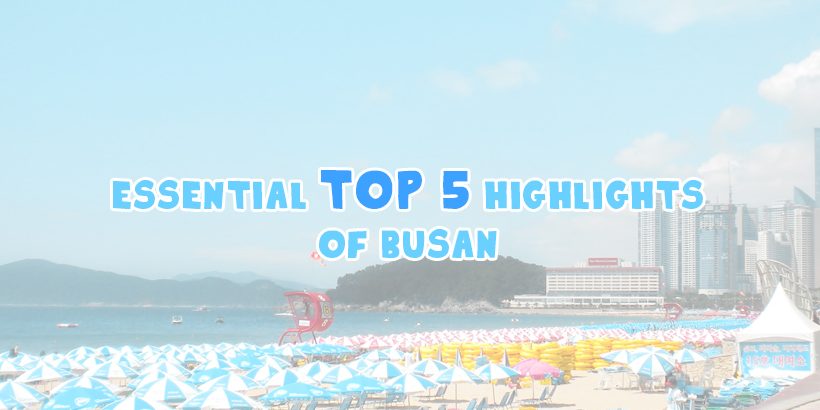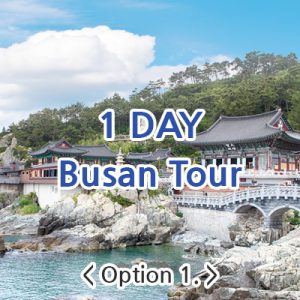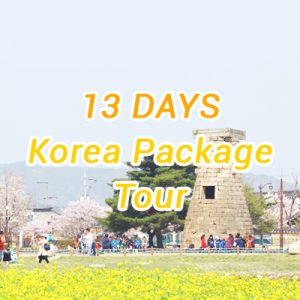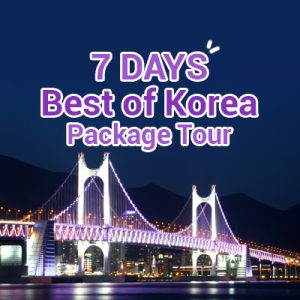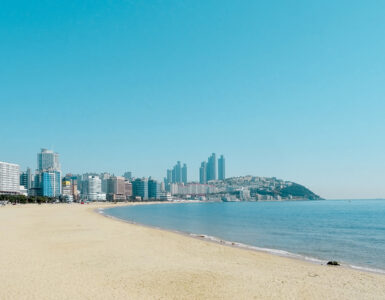
Address: Haeundae-gu, Busan-si
Entrance fee: None
Haeundae Beach in Busan is famous both in Korea and abroad. Not only is it popular as the largest summer vacation spot, but it also attracts people even in the spring, autumn and winter for its variety of festivals and events, such as the Busan International Film Festival, the International Yacht Race and the Haeundae Sunrise Festival. These festivals help keep Haeundae busy as a popular tourist site all year round.
With Haeundae Beach at its center, Haeundae Special Tourist Zone offers diverse marine leisure activities and fresh seafood. The zone has transformed itself from a typical vacation spot into a destination where one can stay long-term while enjoying leisure activities and cultural events. Today, the zone attracts an increasing number of tourists from around the globe. The zone not only has natural resources, such as Haeundae Beach, Dongbaek Island, Dalmaji Hill and sea water hot springs, but also a convention center and IT complex. Well-equipped with cultural facilities, including movie sets, arts galleries and aquariums, it is a qualified destination for MICE (Meeting, Incentive tour, Convention and Exhibition) tourists.
The coastal drive course is another way to enjoy Haeundae Beach. Moontan Road, offering a grand night view and various walking trails, including Galmaet-gil lying along the coastline, should not be missed as well. The skyline at Haeundae underwent a dramatic change with the advent of Centum City. At night, the city skyline that is brilliantly illuminated by the high-end residential/commercial buildings captivates travelers. Inside Centum City are luxury apartments and a grand shopping complex, including a department store and a retail outlet.
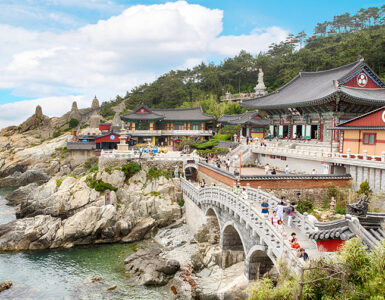
Address: 86, Yonggung-gil, Gijang-eup, Gijang-gun, Busan
Entrance fee: None
Haedong Yonggungsa Temple is situated on the coast of the north-eastern portion of Busan. This superb attraction offers visitors the rare find of a temple along the shore line; most temples in Korea are located in the mountains. Haedong Yonggungsa Temple was first built in 1376 by the great Buddhist teacher known as Naong during the Goryeo Dynasty. Haesu Gwaneum Daebul (Seawater Great Goddess Buddha), Daeungjeon Main Sanctuary, Yongwangdang Shrine, Gulbeop Buddhist Sanctum (enclosed in a cave), and a three-story pagoda with four lions can all be seen looking out over the ocean.
The main sanctuary of the temple was reconstructed in 1970 with careful attention paid to the colors that were traditionally used in such structures. On the right-hand side, inside the a cave, is a uniquely designed Buddhist sanctum, while situated just in front of the main sanctuary is a three-story pagoda with four lions. The four lions are symbolizing joy, anger, sadness, and happiness. Other special sites at the temple are the 108 stairs and stone lanterns lining the rocky landscape. After going down the 108 steps, one will be delighted with the beauty of the temple. Midway down the 108 steps one can stop and enjoy the calming sounds of the waves, and view the majestic sunrise.
Many people often come to this spot on New Year’s Day to make a wish for the new year as they watch the sun come up. April is an especially beautiful time of year with cherry blossoms in full bloom. The birth of Buddha is also celebrated in the fourth month of the lunar calendar and offers a spectacular night view as the temple area is aglow with lit lanterns.
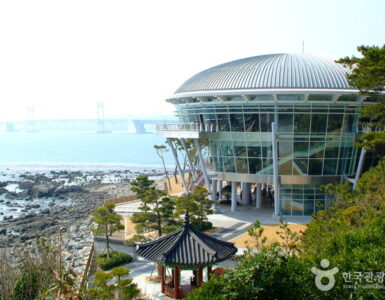
Address: 67, Dongbaek-ro, Haeundae-gu, Busan
Entrance fee: None
Dongbaekseom Island (Island of Camellias) is an island located off one end of Busan’s famous Haeundae Beach. Although the years of sedimentation have connected the island to the mainland, Dongbaekseom was originally an island and is still referred to as one.
Dongbaekseom Island is easy to navigate thanks to the walking path that is built around it. The island has several attractions, including the monument inscribed with a poem of scholar Choi Chi-won, the mermaid statue based on the legend of Princess Hwagok, and the Nurimaru APEC House. It also offers fantastic views of the Busan shoreline towards Mipo, Dalmaji Hill, Gwangangdaegyo Bridge, and Oryukdo Island. As the name suggests, camellias burst into bloom everywhere on the island from winter to spring.
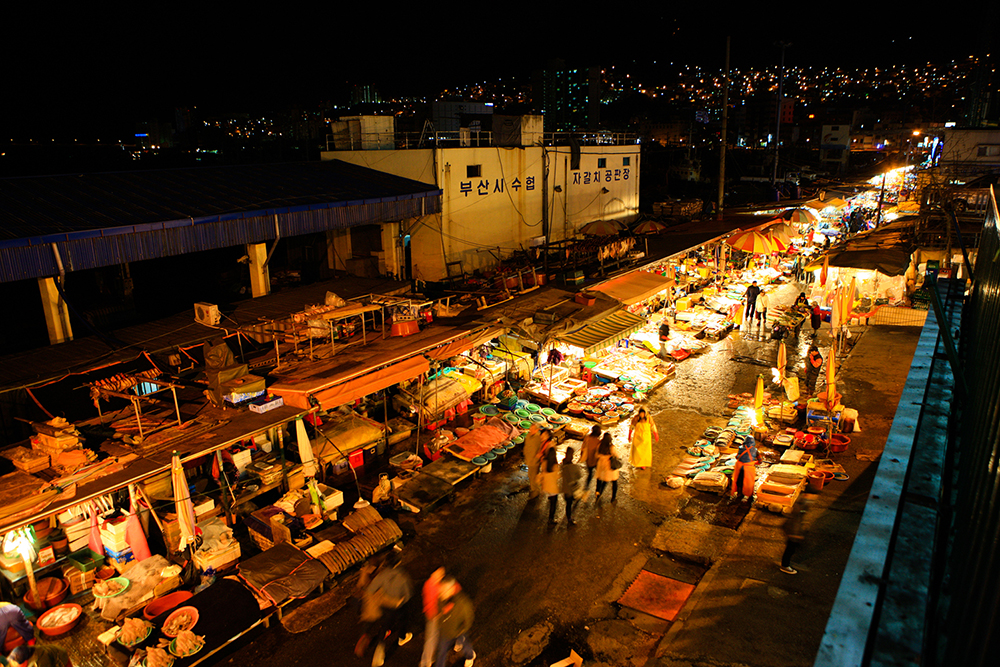
Address:52, Jagalchihaean-ro, Jung-gu, Busan
Entrance fee: None
Jagalchi Market, located on the shoreside road in Busan’s Jung-gu, is Korea’s largest seafood market, selling both live and dried fish. After the Korean War the market solidified itself as a fish market. Most of the people who sell fish are women, so the vendors here are called Jagalchi Ajumma, “ajumma” meaning middle-aged or married woman in Korean. This market represents Busan and is famous throughout the country. If you visit you can eat fresh raw fish right at the market. Even these days you can see women selling mackerel, sea squirts (ascidians) and whale meat on wooden boxes along the road outside of the market and along the shore.
Every year in October the Jagalchi Cultural Tourism Festival is held, and it is easy to visit because of the convenient transportation provided by subway. Jagalchi Market is where you can see the lifestyle of the Busan locals.
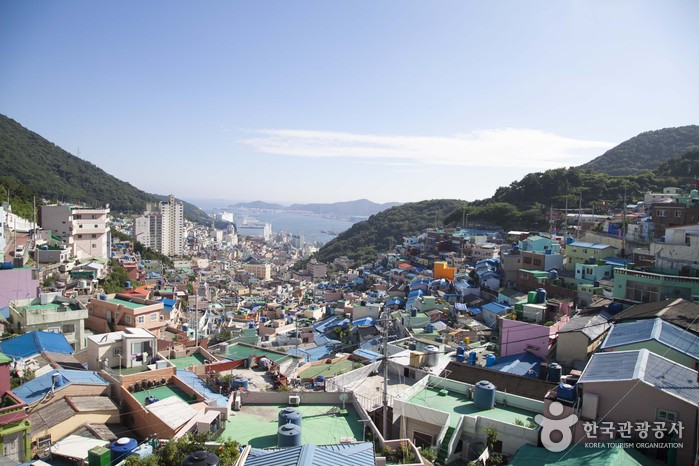
Address: 203, Gamnae 2-ro, Saha-gu, Busan
Entrance fee: None (If over 10 people, it is mandatory to buy the map which is KRW 2,000)
Gamcheon Culture Villiage is formed by houses built in staircase-fashion on the foothills of a coastal mountain, earning this village the nickname “Machu Picchu of Busan.” Many alleys that cut through this community are vibrantly decorated with murals and sculptures created by the residents.
* Visitors can tour the village all year round, but are advised to respect the residential area by being quiet and keeping order.

